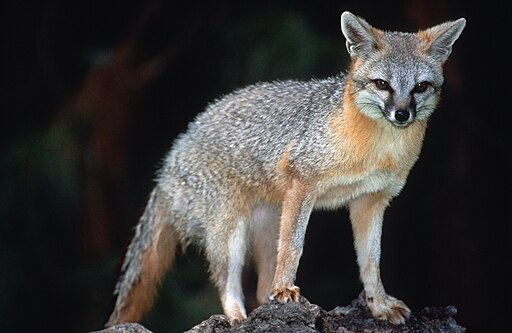Gray Fox
Urocyon Cinercargentus
Written by Kathy Richards
The gray fox is smaller than the red fox and has a shorter muzzle. It weighs between 8-15 pounds. They have about 4 pups per year which are independent by 4-5 months. Unlike popular belief these animals are omnivores.
BEHAVIOR:
This is the only fox that can climb trees. The claws on the front feet are curbed which enables it to climb. The gray fox is nocturnal and very secretive so it is rare to see them. Unlike other animals they do not cashe their food but leave what is left of a meal in the open. They can run at short distances of a speed of 25 mph.
RANGE:
The gray fox can be found from Southern Canada throughout the US with the exception of WY, MT, ID and most of WA. They can also be found as far south as Mexico and Central America. During the 20th century the fed fox’s range has spread northwards in response to an expanding cottontail rabbit population. According to archeological record the gray fox is native to New England.
HABITAT:
The gray fox is very adaptable and can be found in rocky dense hardwood or mixed forests. They can also be found in coniferous forests, swamps, thickets and briars. They don’t have just one den but a series of dens which include hollow stumps, trees and logs, rocky cervices and under abandoned buildings. They line their den with leaves, grass and fur.
PREY:
Its prey includes small mammals, birds, bird eggs, frogs, snakes, insects, carrion, corn, nuts, fruit and berries. It will often climb trees to get to its prey.
Check out other animals in the exhibits nearby

Gray Fox

Fisher

Long Tailed Weasel

